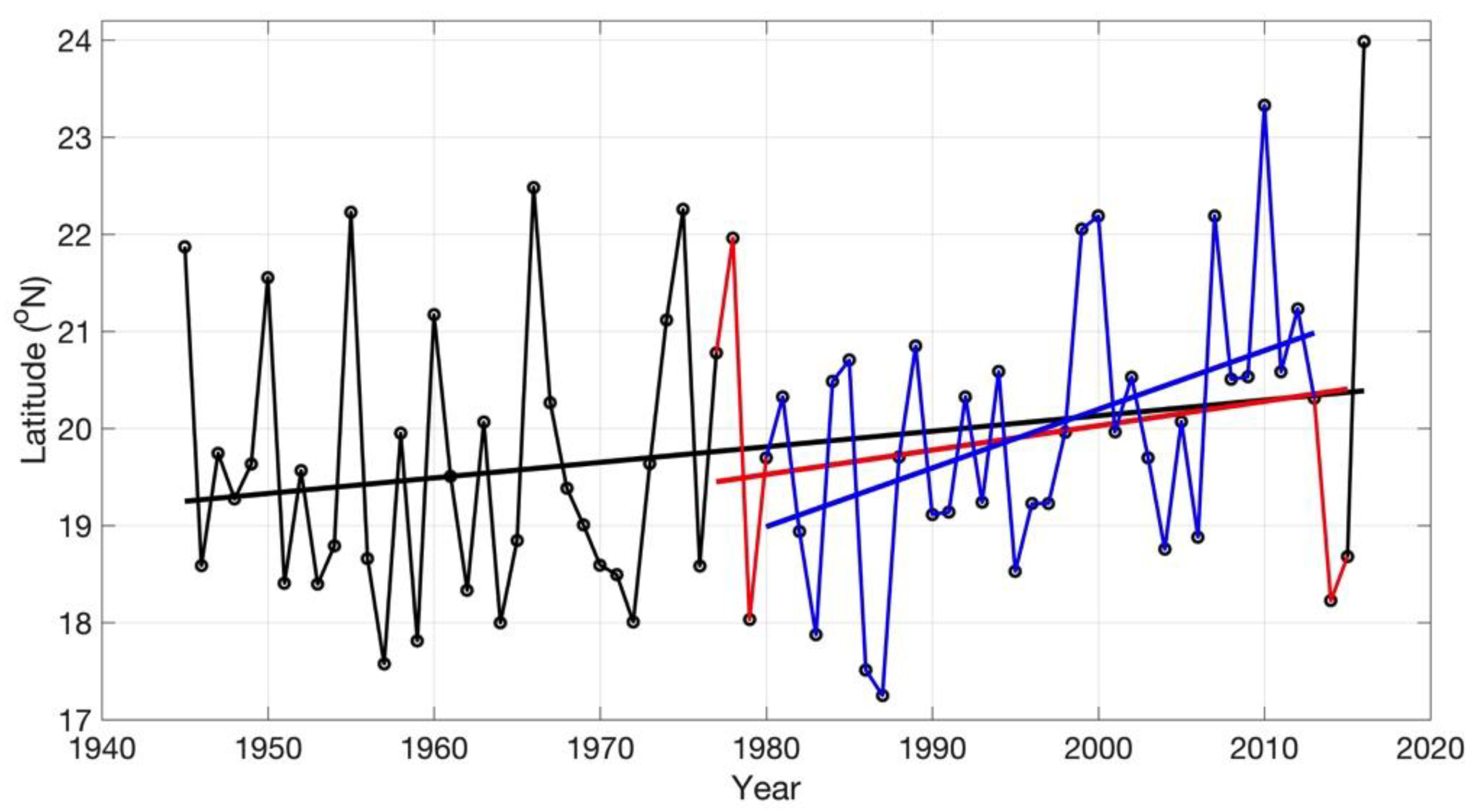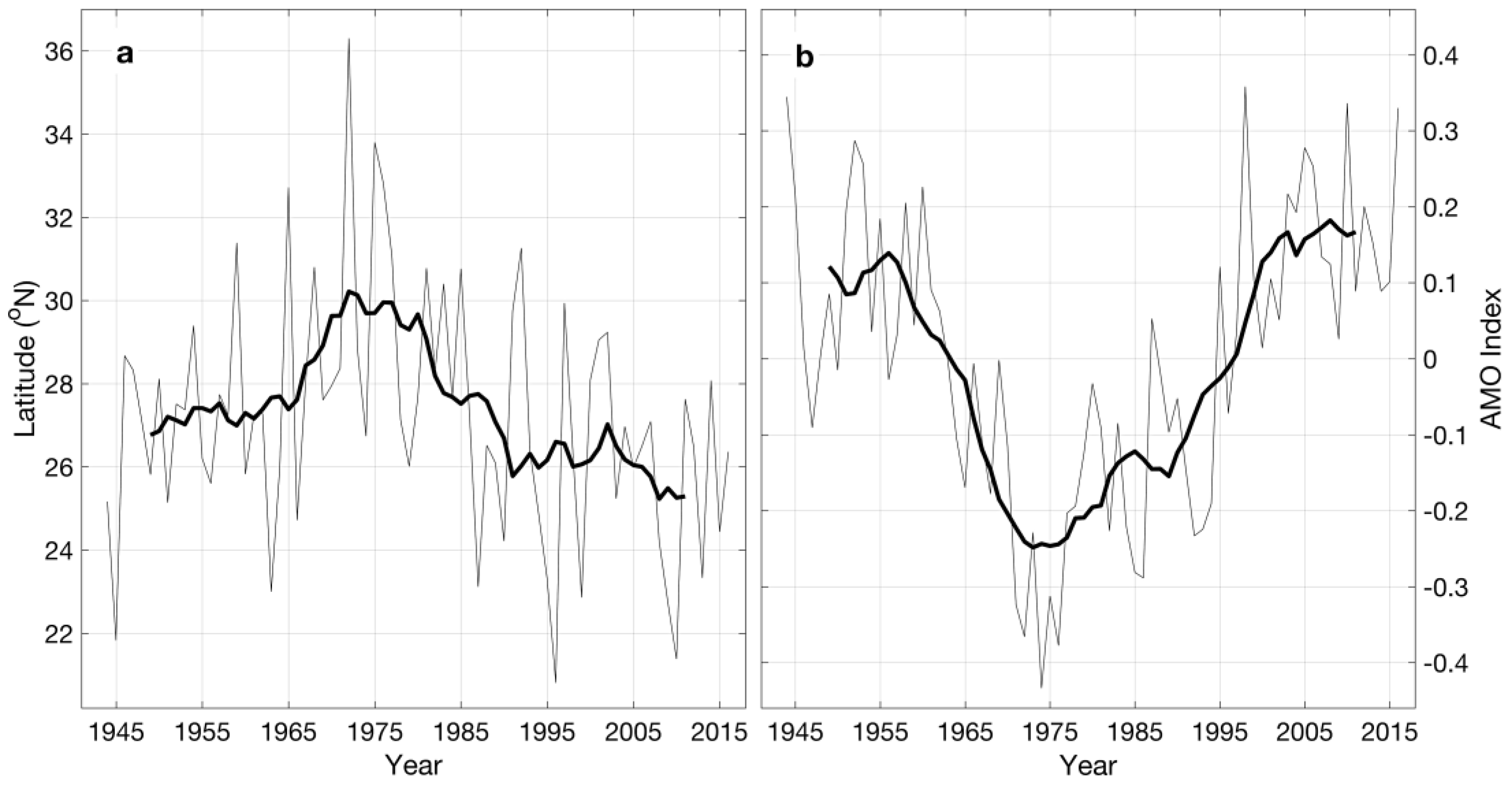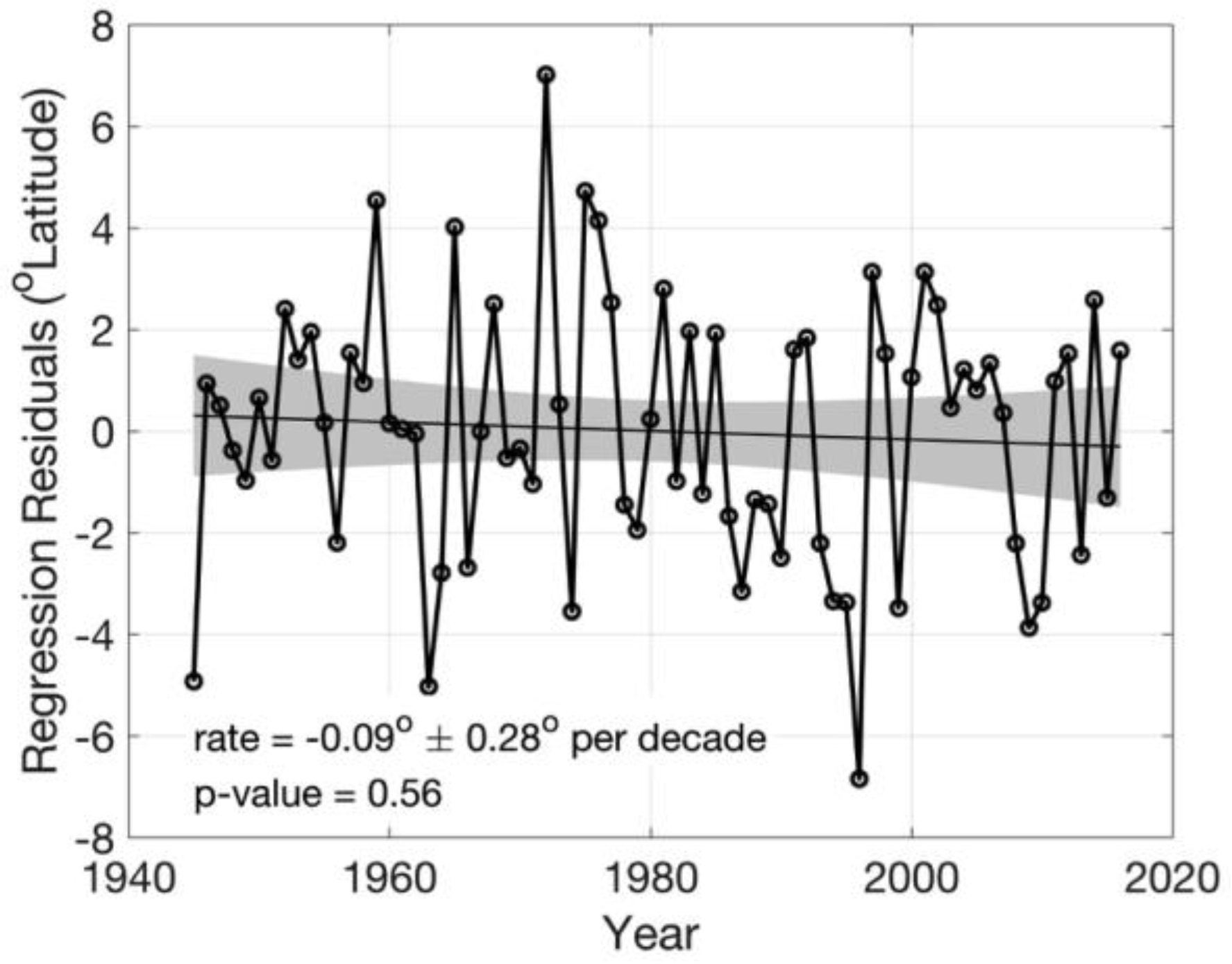Comment on “Spatial and Temporal Trends in the Location of the Lifetime Maximum Intensity of Tropical Cyclones” by Tennille and Ellis
Acknowledgments
Conflicts of Interest
References and Notes
- Kossin, J.P.; Emanuel, K.A.; Vecchi, G.A. The poleward migration of the location of tropical cyclone maximum intensity. Nature 2014, 509, 349–352. [Google Scholar] [CrossRef] [PubMed]
- Kossin, J.P.; Emanuel, K.A.; Camargo, S.J. Past and projected changes in western North Pacific tropical cyclone exposure. J. Clim. 2016, 29, 5725–5739. [Google Scholar] [CrossRef]
- Lucas, C.; Timbal, B.; Nguyen, H. The expanding tropics: A critical assessment of the observational and modeling studies. Wiley Interdiscip. Rev. Clim. Chang. 2014, 5, 89–112. [Google Scholar] [CrossRef]
- Tennile, S.A.; Ellis, K.N. Spatial and temporal trends in the location of the lifetime maximum intensity of tropical cyclones. Atmosphere 2017, 8, 198. [Google Scholar] [CrossRef]
- Kossin et al. 2014 (KEV) omitted all dependencies on the absolute intensity estimates in the global best-track, and consequently their analyses included tropical depressions. Kossin et al. 2016 (KEC) slightly relaxed this constraint by removing these. This accounts for some of the differences between the two studies.
- Tenille and Ellis (TE) state that their analyses are constrained to begin in 1977 because no data were available in the western North Pacific best-track in 1976. In actuality, the data in that basin begin in 1945, and in 1976 the best-track contains data for 25 named storms, 10 typhoons, and four super-typhoons. There are no years that contain no data in the best-track for that region. The cause of this discrepancy is not clear.
- Enfield, D.B.; Mestas-Nunez, A.M.; Trimble, P.J. The Atlantic Multidecadal Oscillation and its relationship to rainfall and river flows in the continental U.S. Geophys. Res. Lett. 2001, 28, 2077–2080. [Google Scholar] [CrossRef]
- Kimberlain, T.B.; Elsner, J.B. The 1995 and 1996 North Atlantic hurricane seasons: A return of the tropical only hurricane. J. Clim. 1998, 11, 2062–2069. [Google Scholar] [CrossRef]
- Vimont, D.J.; Kossin, J.P. The Atlantic meridional mode and hurricane activity. Geophys. Res. Lett. 2007, 34, L07709. [Google Scholar] [CrossRef]
- Kossin, J.P.; Vimont, D.J. A more general framework for understanding Atlantic hurricane variability and trends. Bull. Am. Meteorol. Soc. 2007, 88, 1767–1781. [Google Scholar] [CrossRef]
- Kossin, J.P.; Camargo, S.J.; Sitkowski, M. Climate modulation of North Atlantic hurricane tracks. J. Clim. 2010, 23, 3057–3076. [Google Scholar] [CrossRef]
- Sobel, A.H.; Camargo, S.J.; Hall, T.M.; Lee, C.-Y.; Tippett, M.K.; Wing, A.A. Human influence on tropical cyclone intensity. Science 2016, 353, 242–246. [Google Scholar] [CrossRef] [PubMed]




© 2018 by the author. Licensee MDPI, Basel, Switzerland. This article is an open access article distributed under the terms and conditions of the Creative Commons Attribution (CC BY) license (http://creativecommons.org/licenses/by/4.0/).
Share and Cite
Kossin, J. Comment on “Spatial and Temporal Trends in the Location of the Lifetime Maximum Intensity of Tropical Cyclones” by Tennille and Ellis. Atmosphere 2018, 9, 241. https://doi.org/10.3390/atmos9070241
Kossin J. Comment on “Spatial and Temporal Trends in the Location of the Lifetime Maximum Intensity of Tropical Cyclones” by Tennille and Ellis. Atmosphere. 2018; 9(7):241. https://doi.org/10.3390/atmos9070241
Chicago/Turabian StyleKossin, James. 2018. "Comment on “Spatial and Temporal Trends in the Location of the Lifetime Maximum Intensity of Tropical Cyclones” by Tennille and Ellis" Atmosphere 9, no. 7: 241. https://doi.org/10.3390/atmos9070241
APA StyleKossin, J. (2018). Comment on “Spatial and Temporal Trends in the Location of the Lifetime Maximum Intensity of Tropical Cyclones” by Tennille and Ellis. Atmosphere, 9(7), 241. https://doi.org/10.3390/atmos9070241



